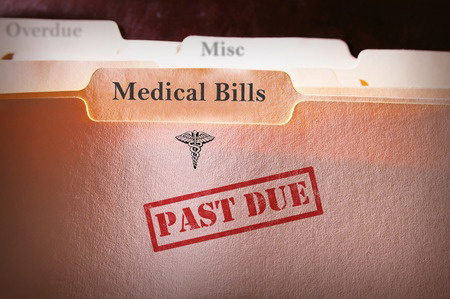The official bankruptcy forms changed as of December 1, 2015, which will impact pro se debtors filing Voluntary Petitions. Mistakes made by pro se debtors include handling of tax refunds and submission of the document production form. Indiana bankruptcy exemption limitations have also changed.
Editor: We recently discussed the changes in the bankruptcy laws with Christopher Holmes, Jess M. Smith, III, partners at Tom Scott & Associates, P.C., along with associate attorney Andrew DeYoung. Below is Part 1 of 3 of the transcript of the conversation.
Q. What’s new in bankruptcy law in Indiana?
Chris Holmes: First of all the official bankruptcy forms changed as of December 1, 2015, so the forms are much more complicated. I think they require much greater sophistication. It’s probably going to impact the pro se debtor — the people who want to represent themselves in a bankruptcy. The forms are supposed to be simpler, but I believe they are much more complicated and perhaps will drive some people to attorneys to have them filled out properly.
Q: What are the different types of information that those forms are now asking people to include?
CH: The same information is being requested, but in a much more confusing way.
Q: Let’s start with that information. What types of information do the forms require?
Andrew DeYoung: The Voluntary Petition, for example, used to be a three-page document. Now, it’s an eight-page document. They’ve taken the old forms and added more language to read and understand, and it’s increased the size of the paperwork in a petition package to 23 pages per case. (Reference: United States Bankruptcy Court Southern District of Indiana Pro Se Debtor Packet)
Q: What kind of information is included in that Voluntary Petition?
AD: All of the property that a debtor owns; all of the creditors that a debtor owes money to; their income; their place of employment; and money they spend on a monthly basis for their household expenses, so it forces debtors to come up with a budget.
CH: People who think they can do it themselves might be fooling themselves, because the paperwork has become so much more complicated and the law imposes so many more requirements on debtors and their counsel to provide certain information and documents. I saw a story today where a woman was trying to do it herself. She had filed her tax returns, but then she had filed her bankruptcy before she had received and spent her tax refund money. So, the trustee was telling her that he was going to be suing her for his fair share of those refunds, because she had not received and spent them before she filed for bankruptcy. As of the date of filing, the refund was an asset of the bankruptcy estate, and the bankruptcy trustee, on behalf of all of the creditors, is entitled to take his fair share of it and distribute that money amongst the creditors. So, she didn’t know that, because she was doing it herself, and now her case is threatened with dismissal and her debts may never be dischargeable. She’ll be denied a discharge if she doesn’t turn over that money to the trustee.
Q: What other common mistakes do people make when they file for bankruptcy for themselves?
AD: We actually had a client, who retained us at our Shadeland Ave. office last week, whose petition I review at our free consultation. She had done everything correctly, but she paid a petition preparer to get it together, which cost her $300. She showed up at the meeting of creditors, but the trustee sent her home because she did not provide him with the document production form, which is required in Chapter 7 cases. So even though this particular person did everything correctly, it still resulted in the hearing not being held and her coming to retain us to get together her document production and fix the different things in her petition that a trustee may want to see perfected. So, she wound up financially in exactly the same place she would have been, minus $300, if she had just hired us to begin with.
Q: It sounds like cases in which people who file their taxes by themselves receive a letter from the IRS that states they owe thousands of dollar in unpaid taxes, plus interest and penalties, and then they hire an accountant to help them resolve the situation.
CH: Yes. I probably could do my own taxes, but I choose to pay someone to do it for me because it’s complicated and I want it done right. I like to use another analogy. I used to change the oil in my car. It’s doable, but I’d rather pay someone to do it because I want it done right, they can dispose of the oil more efficiently that I can, and I’m also afraid I might not get the lug nut in properly. Who knows what could happen then?
Also in regard to the bankruptcy forms is that the exemptions have changed. Indiana has a statute, Indiana Code 34-55-10-2: Bankruptcy exemptions; limitations, which tells people how much property they can protect from their creditors—or in the bankruptcy context, from the trustee who represents their creditors. Those numbers recently increased. It used to be you could protect $17,600 in equity and real estate; that number has gone up to $19,300. Or people could protect $9350 of tangible personal property; that’s now $10,250. So these are important details. Some people who represent themselves perhaps have valuable property that could be taken by the trustee. Like that tax refund situation, they could protect $400 of the tax refund now, as opposed to only $350 previously. There are some sections in the code that tell you some things that you can protect and some things that you can’t protect that are very critical in determining whether you file a Chapter 7 or Chapter 13 bankruptcy. That’s because something might be lost and liquidated in a Chapter 7, but you can pay your creditors enough money to protect those assets in a Chapter 13 case.
Part 2 of Interview: Property You Can Protect When You File for Bankruptcy
Part 3 of Interview: Accruing Post-Petition Interest on Unpaid Federal Taxes

 When foreclosure of a house is a threat, many homeowners seek debt relief through bankruptcy. A fairly common theme in this type of situation is the presence of a second mortgage. Another common aspect in this scenario is that homeowners are unaware of the second mortgage on their home. How does this happen?
When foreclosure of a house is a threat, many homeowners seek debt relief through bankruptcy. A fairly common theme in this type of situation is the presence of a second mortgage. Another common aspect in this scenario is that homeowners are unaware of the second mortgage on their home. How does this happen?
 #8 of 8 in Series — Previous Article #7:
#8 of 8 in Series — Previous Article #7: